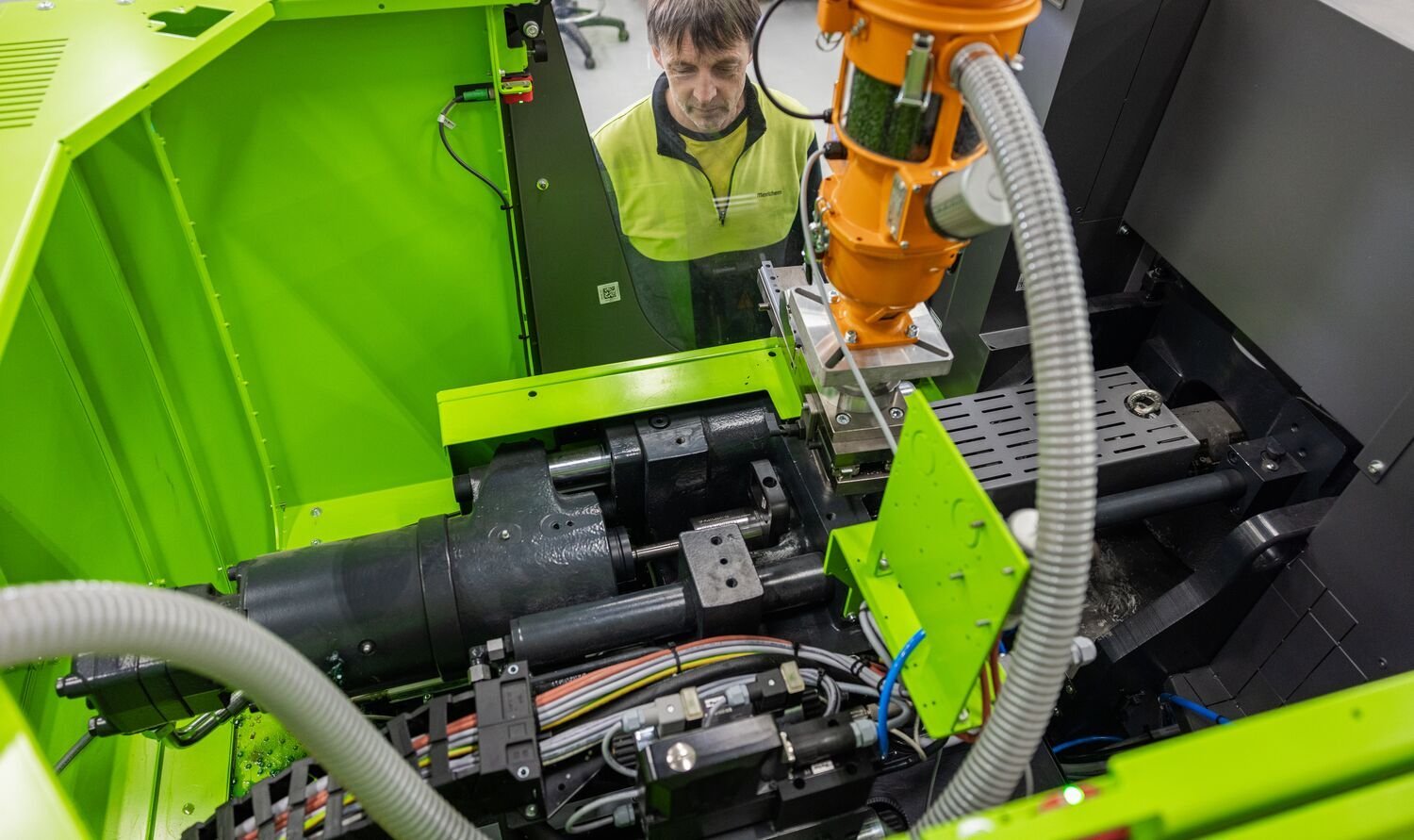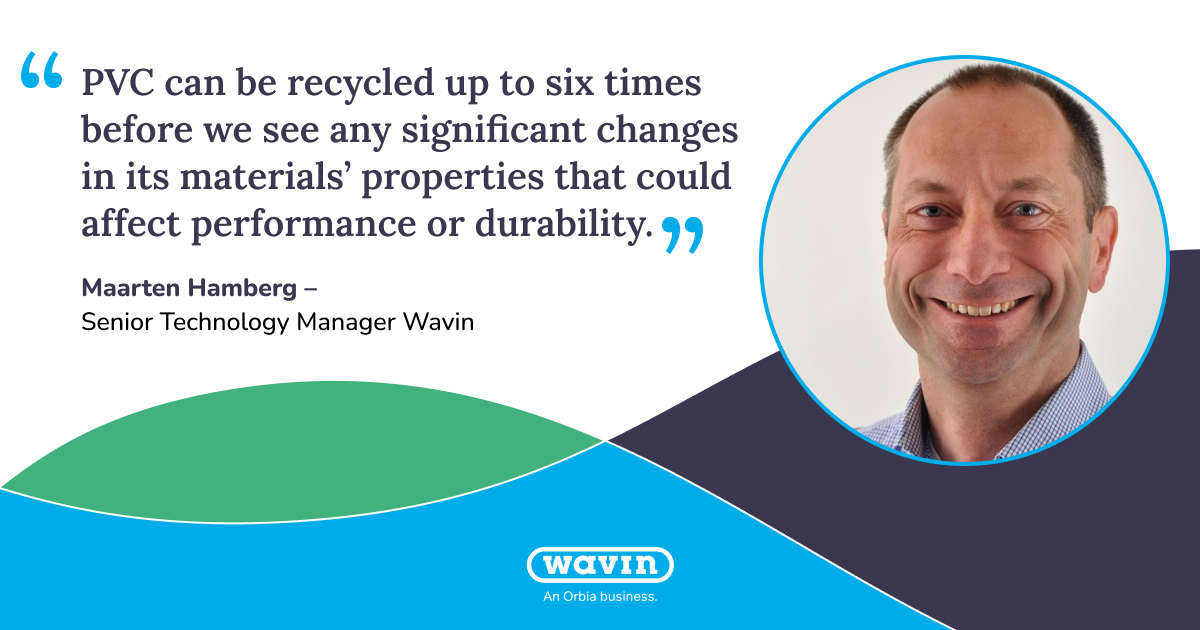Following the publication of the recent meta-study “100 Years Lifetime of Plastic Pipes”, commissioned by The European Plastic Pipes and Fittings Association (TEPPFA), we spoke to three Wavin (an Orbia business) plastics experts to understand their take on the results.
In this article, Maarten Hamberg, Technology Manager, explores the “added extras” contributing to plastic piping’s impressive lifespan and unpacks his vision for the future of this vital technology.
The value of the meta-study
To reach its conclusion on the longevity of plastic, the meta-study compiles extensive data from scientific sources, particularly "dig-out" studies examining pipes that have been in use for up to 50 years. While the standard design benchmark for pressure pipes is 50 years, findings from 23 of the research sources indicate that a 100+ year lifespan is achievable in both pressure and non-pressure applications.
Reflecting on the study’s findings, Hamberg notes that the research confirms what many experts have long known: “If we do things ‘by the book’ and manufacture according to international standards and install plastic pipes correctly, they can easily surpass their predicted lifespan.”
For Hamberg, this conclusion is just a small part of what the meta-study offers. Its greater value lies in providing definitive answers to questions about plastic piping’s durability. Despite the widespread use of plastic for underground water supply pipes, some still question whether it can match the longevity of traditional pipe materials. The meta-study directly answers these concerns, providing an objective, authoritative view. And, because “the University of Leoben is well respected within the world of plastics, having it substantiate these claims is certainly positive.”
Move beyond a concrete-based perspective
Discussions around the meta-study findings and pipe longevity frequently involve comparing plastic and concrete piping. This is an interesting indication of the extent to which the properties of plastic pipes are viewed through a lens designed to consider their concrete counterparts. Hamberg hypothesizes that evaluating plastic solely through a concrete-based perspective misses plastic's unique advantages in specific applications and that the construction industry has work to do to change this.
For example, someone accustomed to working with concrete pipes might look at a misshapen plastic pipe and suggest it isn’t fit for purpose. Yet, there's no functional issue even in rare or unfavorable installation scenarios, such as where pressure from backfill compaction can result in some deformation to the pipe.
In fact, plastics experts view its ability to deal with deformation as a plus. Over time, in this backfill scenario, stress reduces, and the material relaxes — a property that is unique to plastics and evidenced within the meta-study. Concrete piping, consisting of rigid segments joined by rubber seals, doesn't have this flexibility, leaving it unable to adapt to soil shifts. This can lead to joint stress, seal failures, and even cracks in the pipe itself.
This echoes our discussions with Jeannette Mulder, Wavin’s Standardization and Certification Manager, highlighting the importance of focusing on the application of plastic pipes, particularly when considering future pipe development.
The “extras” influencing pipe longevity
Beyond plastic’s resilience to stress and deformation, pipe design and production practices also contribute to the long lifespan of plastic pipes. They’re often designed to exceed the conditions they will typically encounter, which increases durability. Plus, because multiple aspects of pipe design and manufacturing incorporate these “extras”, the result is a pipe that lasts significantly longer than the 50 years of its certified duration.
Hamberg uses a couple of striking examples to illustrate this point: a pressure pipe is designed to operate at 20 degrees for 50 years but will probably only experience temperatures around 10 degrees when below ground, so this will extend its longevity. Similarly, pipes certified for higher pressures are seldom exposed to those test levels consistently over their predicted lifespans, and these periods of lower pressure also translate to a longer-lasting pipe.

Are plastic pipe testing methods sufficiently angled towards longevity?
These “extras” are often built into pipe design and manufacture due to the rigorous testing and inspection crucial to ensuring plastic pipes can meet their predicted lifespan. However, because of the heightened safety requirements of plastic pressure pipes, testing protocols differ between pressure and non-pressure pipes.
These different standards reflect the diametric usage situations of pressure and non-pressure pipes. However, with non-pressure products, the focus of testing is directed more towards the end product, with criteria centred around stiffness (resistance to deformation) and not so much on strength (resistance to failure) as in the case of pressure pipes.
Tailored longevity testing will grow in importance as the industry increasingly turns to recyclates as a materials source. Since recycled plastics have an existing usage history, rigorous quality control is essential to ensure they meet the same standards as virgin materials and can perform to these standards when given a second life.
Looking ahead: the future of sustainable plastic piping
At Wavin, we recognise recycled plastics' significant role in creating a circular economy and building a more sustainable future worldwide. That’s why we’ve been recycling PVC for over 30 years and working with internal and external experts to overcome the challenges that recycled plastic materials present for the construction industry.
As Hamberg explains, Wavin’s pipe solutions are something we’re proud to create: “We offer a 50-year guarantee on our products. We know how to use these materials optimally and can do it over and over again. In fact, PVC can be recycled up to six times before we see any significant changes in its materials’ properties that could affect performance or durability.”
Building on this progress with recycled plastics, the next step at Wavin is to scale up sustainability efforts. For Hamberg, this means speeding up the testing process: “As it stands, it takes around a year to conduct testing. Reducing this time will allow us to introduce even more materials, explore different applications, and have greater flexibility. That would be ideal. Of course, the standards must allow that; only time will tell how quickly the industry will adapt.”
For further expert insights, or to learn more about how recycled materials contribute to Wavin’s sustainability journey, visit our dedicated webpage.
We also interviewed Ronald Bal (Global Circularity Manager) and Jeannette Mulder (Standardization and Certification Manager) about the TEPPFA meta-study. Be sure to read their perspectives as well.

